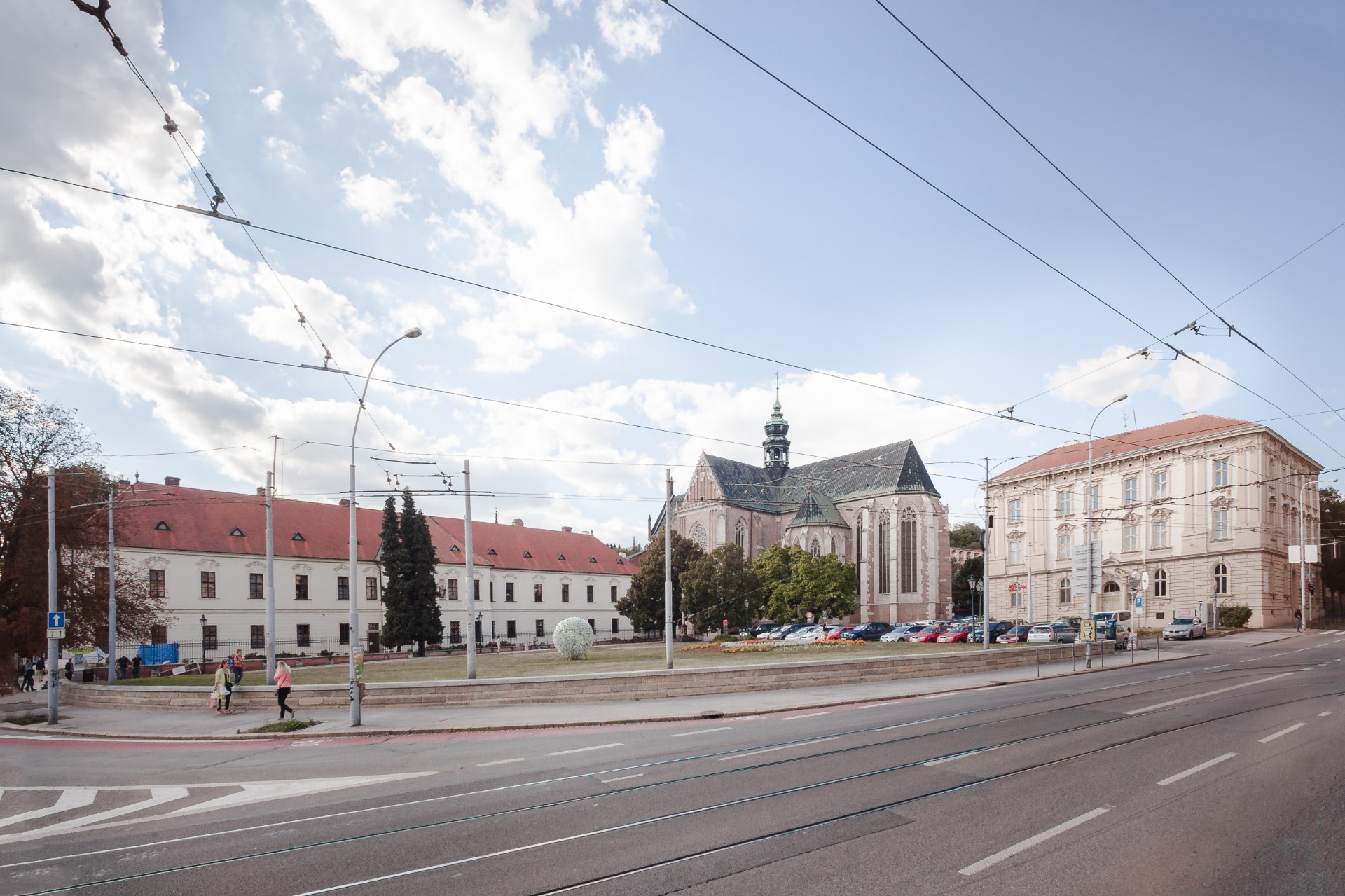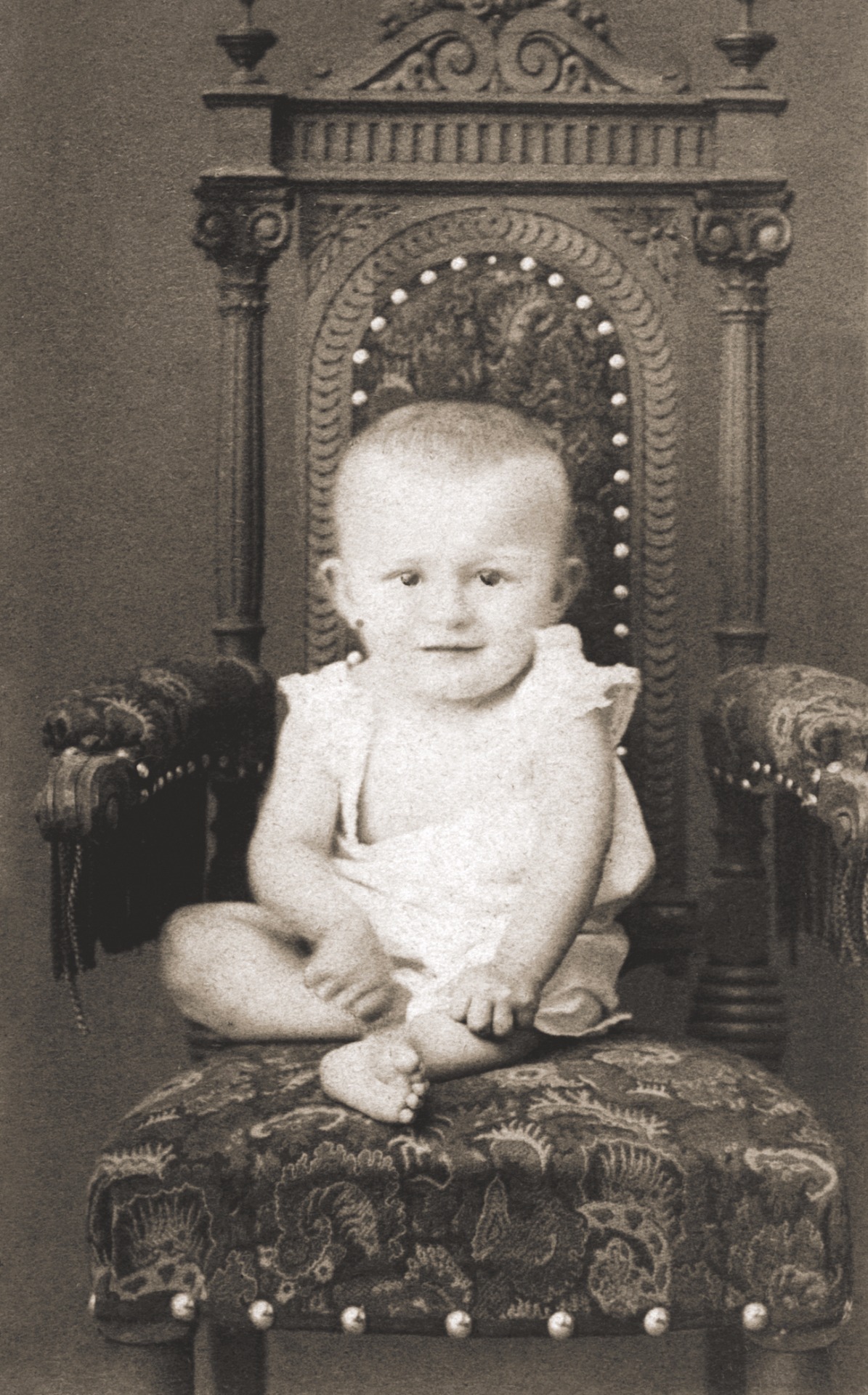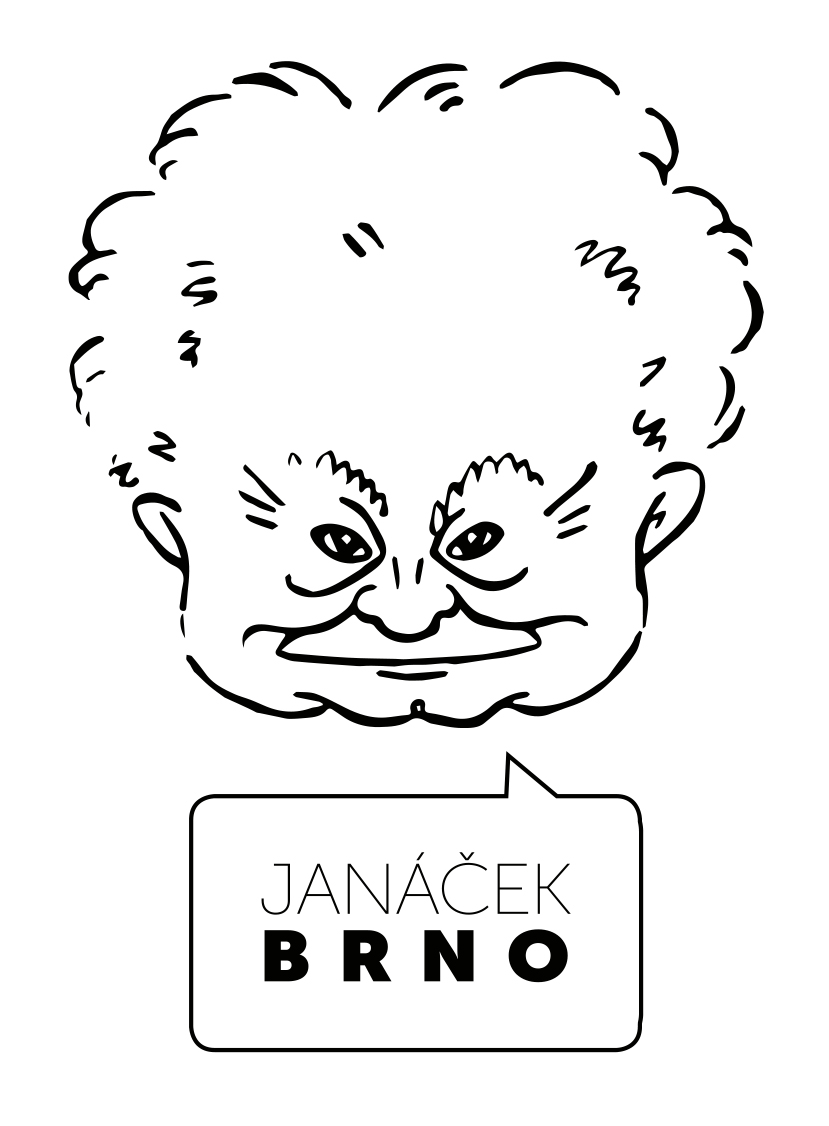
2
Mendlovo náměstí
(Mendel Square)
MENDLOVO NÁMĚSTÍ
A large part of Janáček's life is associated with Old Brno, where he lived until he was 56. He spent his childhood at the local Augustinian Monastery, he attended the Old Brno primary school and secondary school, he worked as a teacher, he led the choir in the basilica, he got married, and both of his children were born here and died here. His first home was on Měšťanská (today's Křížová) street, where his mother also lived for a short while. In 1882 he moved with his wife, Zdenka, and his daughter, Olga, to a house on Klášterní (today's Mendlovo) náměstí, and lived there until 1910. The old tenement house which stood in the middle of the square no longer exists, having been torn down in the middle of the 20th century. In this house Janáček witnessed both happy family moments and tragedies. His son Vladimír (1888-1890) was born here and died here at the age of two, and his beloved daughter, Olga (1882-1903), also died here at the age of twentyone. Despite experiencing so much misfortune, Janáček also composed many works here, for example, the operas Šárka, The Beginning of a Romance, Jenůfa and Fate, the cantata Amarus, the male choruses based on Bezruč's poems, and the piano cycle On the Overgrown Path.
The flat was beautiful and large. The master had found it himself [...] But even on Klášterní náměstí we didn't have today's modern conveniences and equipment. [...] On each floor there was only a communal tap on the corridor for all of the tenants [...] from this single tap I fetched all the water to the kitchen for cooking, cleaning, washing and bathing, and then I took the dirty water out in tubs and threw it away. [...] There was no electric light at that time in Brno and there was no gas in our building. So we only had petrol lamps. It wasn't very convenient, but it seemed like great progress to us after candles. [...] The home was very conveniently located for the master. Across the street was the monastery, where he was the choirmaster, and it was just a few steps to the Teaching Institute on the banks of the Svratka.
At the Janáčeks according to the housekeeper Marie Stejskalová (1959)




